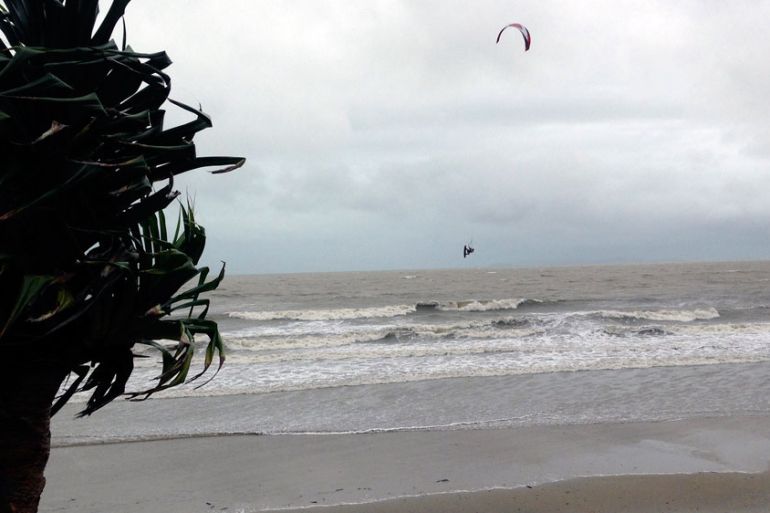Second cyclone threatens northern Australia
Another major storm system is expected to hit the country in the coming days.

Another tropical cyclone is bringing the threat of disruption to northern Australia.
Severe Tropical Cyclone Marcia has formed in the Coral Sea, just a few days after the development of Severe Tropical Cyclone Lam, which is approaching the Top End.
Keep reading
list of 4 itemsAfter the Hurricane
World’s coral reefs face global bleaching crisis
Why is Germany maintaining economic ties with China?
Currently a Category 2 storm, with sustained winds of 100kph and gusts of 150kph, Marcia is expected to intensify into a Category 3 storm by the time it makes landfall at around 1600GMT Friday (0200AEST Saturday).
As a Category 3 system, Marcia could bring sustained winds in excess of 165kph and the Australian Bureau of Meteorology is predicting gusts as high as 185kph.
It should be noted that the Australian classification differs from the Saffir-Simpson scale used to describe Atlantic hurricanes. The Australian scale has slightly different thresholds and is based on wind gusts, not mean speeds.
In addition to destructive winds, Marcia will bring dangerous surf and high water levels, well above the highest tide of the year on the high tide.
Flash flooding is also likely, with more than 250mm expected to fall on a wide swathe of coastal Queensland.
Meanwhile, Severe Tropical Cyclone Lam, in the Arafura Sea, is heading towards Arnhem Land at a steady 10kph. It is expected to make landfall at approximately 1900GMT (0500AEST Friday). It is currently a Category 3 system but is expected to reach category 4 at landfall.
The Bureau of Meteorology expects wind gusts to intensify, reaching 230kph as the cyclone crosses the coast between Milingimbi and Gapuwiyak.
Very dangerous storm tides and coastal flooding are expected.
Intense rainfall from Marcia will also pose a flooding risk well inland. Rainfall totals are expected to reach 250 to 500mm.
Australia’s cyclone season runs from 1st November until 30th April, with a peak between late January and March.
Because of the relatively low population density and sophisticated weather prediction and warning systems, cyclones here are far less deadly than in other parts of the world.
The last major cyclone to hit the country was 2011’s Yasi, a category 5 storm, which brought gusts of 285kph and caused $2.8bn worth of damage. Yet, despite the severity of Yasi, there were no direct fatalities.